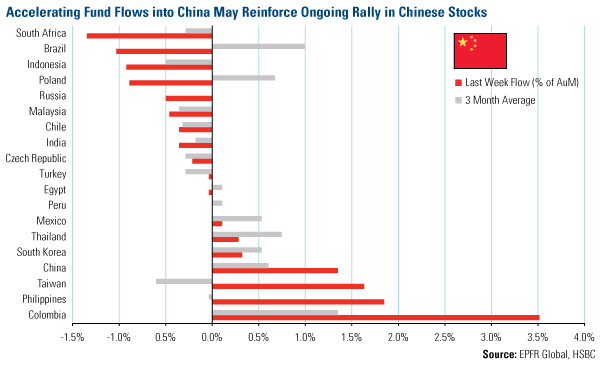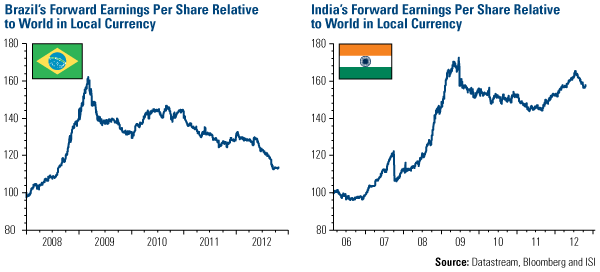Emerging Markets Radar (November 5, 2012)
Strengths
- China official October PMI was up to 50.2 from 49.8 in September. It stood slightly above the expansion/contraction threshold of 50. The PMI showed improvement of new order, accelerated production, and constructive inventory dynamics, helped by the government’s pro-growth measures since early summer. The investors become more confident that China may have bottomed from its GDP growth trough in the third quarter.
- China’s new home prices rose for a fifth month as sales picked up in a sign that government tightening policies are helping to stabilize the property market. Prices climbed 0.17 percent in October, which should be regarded stable by the government.
- Across ASEAN countries, bank loan growth is strong, which is supporting domestic economic growth. Bank loans grew 15.3 percent, 23.6 percent, and 14 percent in August for Thailand, Indonesia, and Philippines, respectively.
- Inflation is steady in Thailand with October CPI reading at 3.32 percent, lower than the market expectation of 3.4 percent.
- Indonesia’s exports contracted 9.4 percent in September, better than the market expected contraction of 14.1 percent. Trade surplus widened to $553 million from $233 million, which reduced the current account deficit to 2.6 percent of GDP.
- Korea’s exports increased 1.2 percent in October versus decreasing 1.8 percent in September showing signs of improving global demand, particularly in China.
Weaknesses
- Indonesia’ October CPI was 4.6 percent, in line with market expectation but slightly higher than September’s 4.3 percent.
- Hong Kong Monetary Authority (HKMA) has raised the stamp sales tax from 15 percent to 20 percent for properties sold before the end of a six-month holding period, and from 5 percent to 10 percent for properties held less than three years.
- In Thailand, the manufacturing production index (MPI) fell 13.7 percent in September due to a drop in production in export related sectors.
Opportunities

- The graph above shows money flows into emerging market. China has seen increasing net inflows last week, which can help sustain the bull market in H share stocks in Hong Kong.

- ISI research shows that country valuations simply reflect expected returns on equity (ROE) and that the trends in price track trends in forward earnings-per-share (EPS). The trends in forward EPS are very long lasting as they are determined by long term factors such as wage growth and rate of economic activity.
- Markets like the U.S. that are expected to generate higher ROEs trade on richer valuations than markets like Italy or Japan that are expected to offer lower ROEs. Within the emerging markets space, forward EPS in India look much more favorable than those in Brazil.

Threats
- The Hong Kong Monetary Authority intervened last week in the foreign exchange market by injecting HK$24.4 billion (USD$3.15 billion) into the monetary base to defend Hong Kong’s local currency due to a large amount of foreign money flowing into the city. While money flows to Hong Kong are positive for asset price, it may cause further hikes in housing prices from the current high level, which can cause inflation. Some commentators are concerned with eventual money outflow, which can cause market volatility.
- Turkish Daily Hurriyet claimed that Competition Board (CB) believes 12 banks acted together in setting loan rates in various lending products. If this becomes the final verdict, the penalty is said to be no less than the 2 percent of the banks’ revenues.
- Egyptian shares slumped after a court ruling to annul Centamin’s 18-year old gold mining contract with the government.












